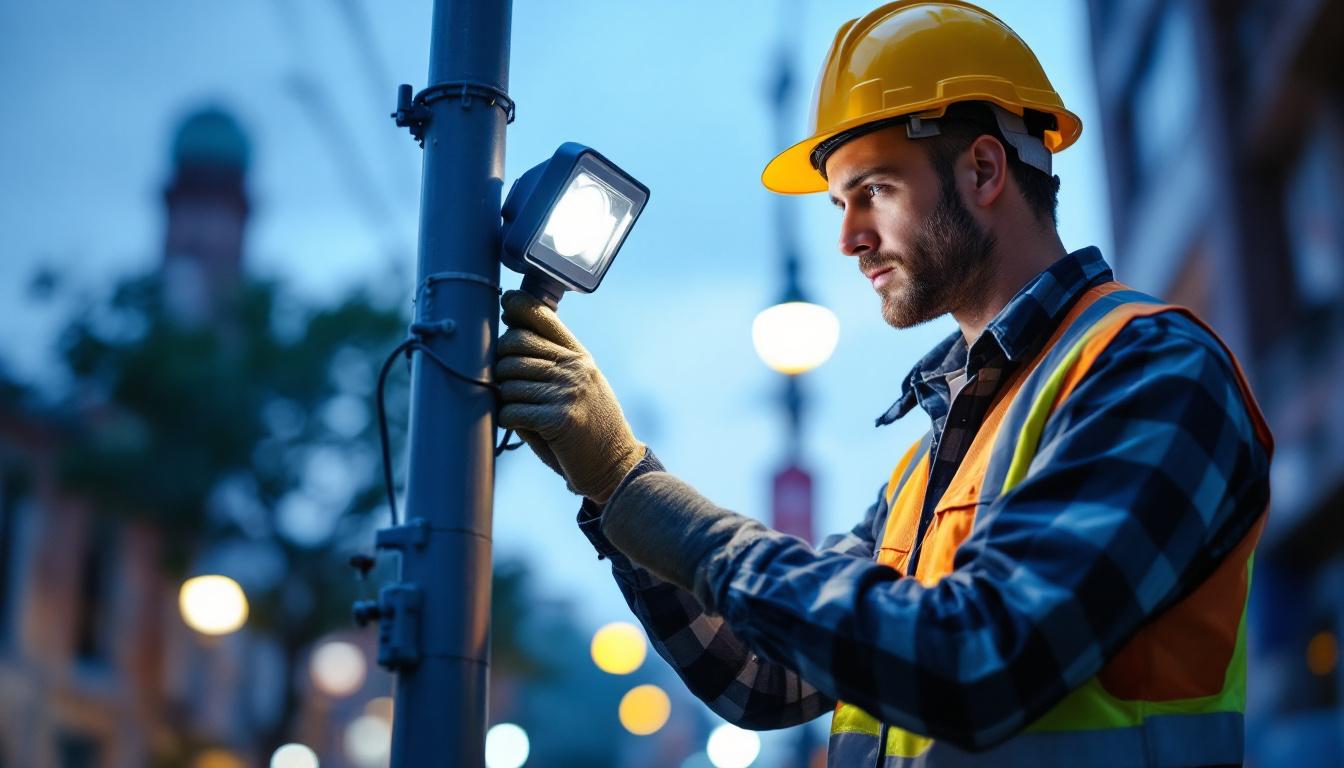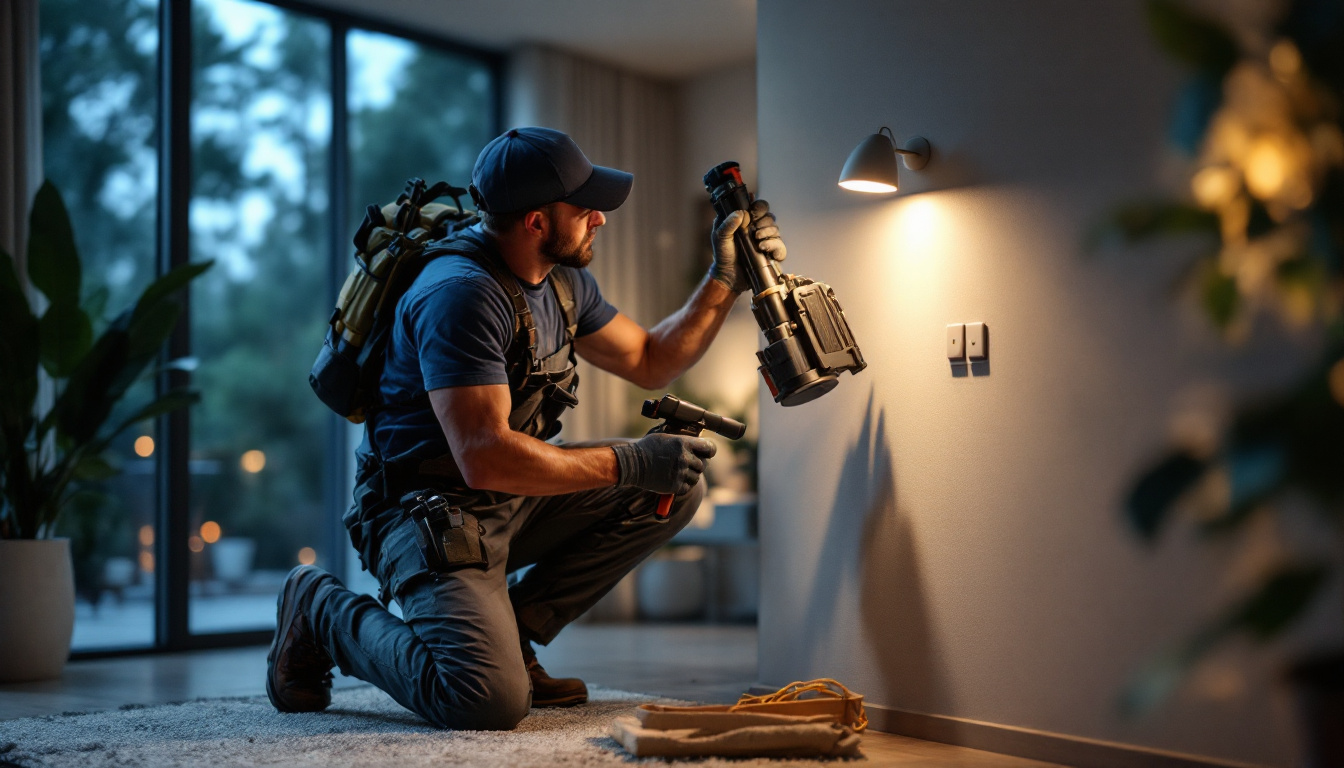
Lamppost sensors have revolutionized the way outdoor lighting systems are managed and maintained. For lighting contractors, understanding these devices is essential to delivering efficient, cost-effective, and environmentally friendly lighting solutions. These sensors, integrated into street lighting infrastructure, enable automated control based on ambient conditions, movement detection, and other parameters. By utilizing advanced technologies such as photodetectors and motion sensors, lamppost sensors can adjust lighting levels in real-time, ensuring that streets are well-lit when needed while conserving energy during off-peak hours.
As urban areas expand and municipalities prioritize sustainability, lamppost sensors have become a critical component in smart city initiatives. Lighting contractors who master the technology and installation of these sensors stand to enhance their service offerings and meet growing client demands for intelligent lighting systems. Furthermore, the integration of lamppost sensors with other smart technologies, such as traffic management systems and environmental monitoring devices, creates a cohesive network that not only improves public safety but also contributes to the overall efficiency of urban infrastructure. This interconnectedness allows for data collection that can inform future city planning and resource allocation, making lamppost sensors a vital asset in the ongoing development of smart cities.
In addition to energy savings, lamppost sensors also play a significant role in enhancing public safety. By detecting movement, these sensors can increase lighting levels in response to pedestrian or vehicular activity, creating a safer environment during nighttime hours. This feature is particularly beneficial in high-traffic areas or neighborhoods that have experienced safety concerns. Moreover, the data collected by these sensors can be analyzed to identify patterns in foot traffic and vehicle movement, enabling municipalities to make informed decisions about where to allocate resources for lighting improvements or additional safety measures. As the technology continues to evolve, we can expect even more innovative applications that will further integrate lamppost sensors into the fabric of urban living.
Photocell sensors are among the most common lamppost sensors. They detect natural light levels and automatically switch streetlights on at dusk and off at dawn. This simple yet effective technology helps reduce unnecessary energy consumption by ensuring lights operate only when needed.
For contractors, installing photocell sensors involves precise calibration to local light conditions and ensuring compatibility with existing lighting fixtures. Photocells are particularly valuable in residential neighborhoods and low-traffic areas where dimming or complete shutdown during daylight hours is appropriate. Additionally, these sensors can be programmed to accommodate seasonal changes in daylight hours, ensuring optimal performance year-round. Their reliability in various weather conditions, from overcast days to bright sunny ones, further enhances their appeal, making them a staple in urban planning and sustainable development initiatives.
Motion sensors detect movement near the lamppost and adjust lighting accordingly. These sensors can increase light intensity when pedestrians or vehicles approach and dim or turn off lights when no activity is detected. This dynamic lighting approach significantly reduces energy costs while maintaining safety and visibility.
Lighting contractors must consider sensor range, sensitivity, and placement to avoid false triggers or missed detections. Motion sensors are ideal for parks, pathways, and commercial areas where intermittent activity occurs. Moreover, advancements in technology have led to the development of sensors that can differentiate between human and animal movement, further refining their functionality. This capability is particularly beneficial in urban parks where wildlife may trigger traditional motion sensors, leading to unnecessary light activation. By implementing these sophisticated systems, municipalities can enhance safety while minimizing light pollution and energy waste.
Modern lamppost sensors often combine photocell and motion detection technologies to optimize performance. These hybrid sensors can adjust lighting based on ambient light and real-time activity, providing a balanced approach to energy savings and safety.
Contractors should evaluate the integration capabilities of these sensors with existing control systems and ensure firmware updates are manageable to maintain system efficiency over time. The versatility of combination sensors allows for tailored solutions that can adapt to various environments, from bustling city streets to quiet suburban areas. Furthermore, with the rise of smart city initiatives, these sensors can be integrated with broader urban management systems, enabling data collection and analysis that can inform future infrastructure improvements. This interconnected approach not only enhances the functionality of street lighting but also contributes to the overall smart city ecosystem, paving the way for more sustainable urban living.
One of the primary advantages of lamppost sensors is their ability to significantly reduce energy consumption. By automating lighting schedules and adjusting brightness based on real-time conditions, municipalities and private clients can lower electricity bills substantially.
Studies have shown that integrating sensor technology can reduce street lighting energy use by up to 60%, depending on the sensor type and deployment strategy. For lighting contractors, promoting these savings is a compelling selling point when bidding for projects.
Properly implemented sensor lighting improves public safety by ensuring adequate illumination when needed. Motion-activated lighting can deter criminal activity and increase visibility for pedestrians and drivers, reducing accidents and enhancing community well-being.
Contractors should emphasize the role of sensor lighting in safety audits and collaborate with local authorities to tailor sensor settings to specific neighborhood needs.
Lamppost sensors can extend the lifespan of lighting fixtures by reducing operating hours and preventing unnecessary wear. Additionally, many sensors include remote monitoring capabilities, allowing maintenance teams to detect failures or issues promptly without routine manual inspections.
For contractors, this translates into fewer service calls and a reputation for delivering durable, low-maintenance lighting solutions.
Before installation, conducting a thorough site assessment is critical. Contractors should evaluate ambient light conditions, traffic patterns, and local regulations. Understanding the environment ensures sensor placement maximizes effectiveness and minimizes false activations.
Planning should also include power supply considerations, mounting height, and integration with existing lighting control systems. Early collaboration with municipal planners or property managers can streamline the approval process and reduce project delays.
After installation, precise calibration is essential to tailor sensor sensitivity and timing to site-specific conditions. Photocell sensors must be adjusted to the appropriate light threshold, while motion sensors require fine-tuning of detection range and delay intervals.
Contractors should perform comprehensive testing during different times of day and under various weather conditions to ensure reliable operation. Documenting calibration settings and test results supports future maintenance and troubleshooting.
Many municipalities are adopting smart city technologies that allow centralized control and data analytics for street lighting. Lighting contractors should be familiar with communication protocols such as Zigbee, LoRaWAN, or NB-IoT, which facilitate sensor networking.
Integrating lamppost sensors with these platforms enables remote monitoring, adaptive lighting strategies, and predictive maintenance. Contractors who offer expertise in smart lighting integration position themselves as valuable partners in urban development projects.
One common issue with motion sensors is false triggering caused by animals, weather conditions, or nearby heat sources. These false activations can lead to unnecessary energy consumption and increased maintenance calls.
Contractors can mitigate this by selecting sensors with adjustable sensitivity, employing directional sensors, and using shielding techniques to limit interference. Proper site assessment also helps identify potential sources of false triggers before installation.
Retrofitting sensors onto older lampposts or lighting systems can present compatibility challenges, including power supply mismatches or physical mounting difficulties. Contractors should conduct compatibility checks and, when necessary, recommend fixture upgrades to clients.
Using modular sensor designs and universal mounting brackets can simplify installation and future upgrades, enhancing overall system flexibility.
Lamppost sensors are exposed to harsh outdoor environments, including extreme temperatures, moisture, dust, and vandalism. Ensuring that sensors have appropriate ingress protection (IP) ratings and robust construction is vital for long-term reliability.
Contractors should source sensors from reputable manufacturers and consider protective housings or tamper-resistant features in high-risk areas.
Advancements in artificial intelligence (AI) are enabling lamppost sensors to learn and adapt to usage patterns over time. AI-driven systems can optimize lighting schedules dynamically, improving energy savings and user experience.
Lighting contractors should stay informed about these developments and consider offering AI-enabled solutions to clients seeking cutting-edge technology.
The future of lamppost sensors involves multi-functional devices that monitor air quality, noise levels, and traffic flow alongside lighting control. This convergence supports comprehensive urban management and enhances the value proposition for lighting contractors.
Contractors who develop expertise in multi-sensor platforms can expand their service offerings and participate in broader smart city initiatives.
Emerging technologies in wireless power transmission and energy harvesting, such as solar panels integrated with lamppost sensors, promise to reduce reliance on grid power and simplify installation logistics.
Contractors should evaluate these innovations for feasibility in their projects, especially in remote or off-grid locations.
Lamppost sensors represent a transformative technology for outdoor lighting, offering significant benefits in energy efficiency, safety, and operational cost reduction. For lighting contractors, mastering the selection, installation, and maintenance of these sensors is essential to staying competitive and meeting the evolving demands of clients and municipalities.
By understanding sensor types, best practices, and emerging trends, contractors can deliver intelligent lighting solutions that contribute to smarter, safer, and more sustainable urban environments.
Ready to elevate your lighting projects with the latest lamppost sensor technology? At LumenWholesale, we provide lighting contractors like you with the highest quality, spec-grade lighting products at unbeatable wholesale prices. Say goodbye to local distributor markups and hello to superior lighting solutions that meet the strictest industry standards. With our vast selection and commitment to hassle-free bulk buying, you can ensure your projects shine with reliability and high performance. Plus, with free shipping on all orders, you get the premium lighting you need at the best value — no hidden fees, no compromises. Don’t miss out on the perfect blend of quality, affordability, and convenience. Wholesale Lighting at the Best Value is just a click away!

Discover the advantages of low voltage can lights for lighting contractors, including energy efficiency, enhanced safety, and versatile design options.

Discover the essential best practices lighting contractors use when working with large solar lantern lights.

Discover how to build LED lights in just 5 minutes with our expert guide for lighting contractors.

Discover the essential resources lighting contractors rely on to master steel light post installations.